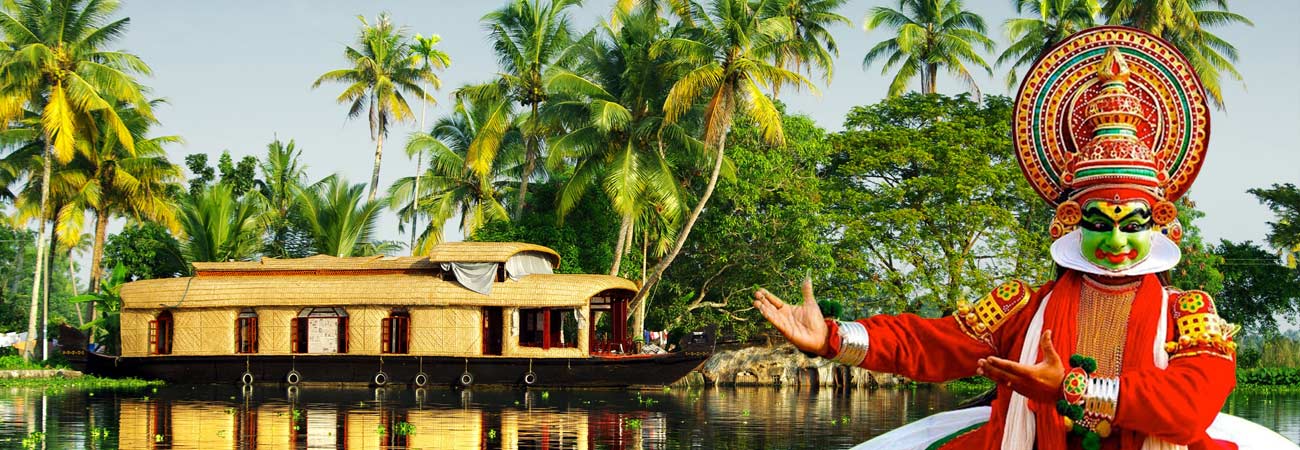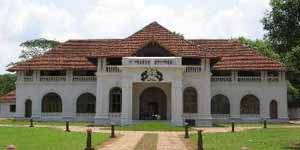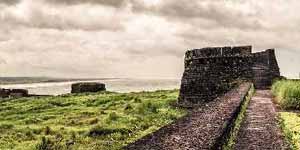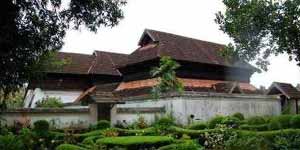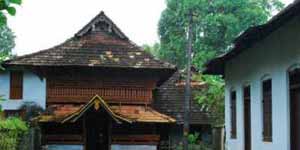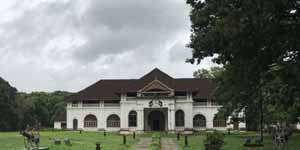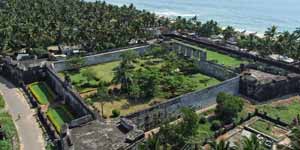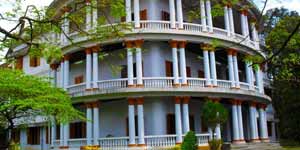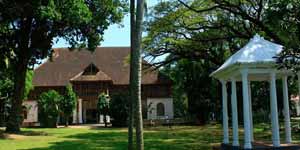
Mattancherry Palace
The Mattancherry Palace, also known as Dutch Palace, is one of the finest examples of the Kerala style of architecture interspersed with colonial influences. Located at around 12 km from Ernakulam, it was built around 1545 C.E. by the Portuguese as a present to King Veera Kerala Verma of Kochi dynasty. It came to be known as the Dutch Palace as it underwent major repairs at the hands of the Dutch. It is famous for its long and spacious halls along with its central courtyard. It is also the home of the deity of the royal family, Pazhayannur Bhagavathy (the Deity of Pazhayannur).
This double storied palace has a lovely collection of murals. These depict some of the great Indian epics like Ramayana and Mahabharata along with revered Gods of the Hindu faith like Lord Krishna of Guruvayur Temple. The great works of Sanskrit poet Kalidasa have also been depicted. The mural paintings cover an area of almost 300 sq. km. One gets an idea of the lives of the royal family with some of the other exhibits. These include the life-size portraits of the Kings of Cochin since 1864, sheathed swords, daggers and axes besides ceremonial spears decorated with feathers. Royal caps, coins issued by the Kings of Cochin along with plans laid out for Cochin by the Dutch can also be viewed here.
Visiting Hours:
10:00 - 17:00 hours on all days except Fridays.
Getting there
Nearest railway station: Ernakulam, about 10 km
earest airport: Cochin International Airport, about 42 km
History
The palace was built and gifted by the Portuguese to the King of Cochin Veera Kerala Varma in the year 1555, but the Dutch made some changes and renovated again in the year 1663 and so later it became popular as the Dutch Palace. After renovation, the rajas has also made some improvements in it and now the palace is known as a portrait gallery of the Kochi Rajas and far-famed for some of the best mythic murals in India.
Architecture
This palace with a Bhagavathi Temple in the central courtyard is constructed like the traditional Kerala style mansion which is known as Naalukettu model with four separate wings opening out to a central patio. This patio houses a temple of the royal deity Pazhayannur Bhagavathi and the other two temples are located on the either side of the palace are dedicated to Lord Krishna and Lord Shiva.
From outside, the palace looks very elegant with the white walls on the front and the sloping roof. The ground floor of the palace includes the ladies room with a staircase to the Kanithalam room while on the upstairs there is a square shaped coronation hall, royal bed chamber, assembly hall, dining hall and the staircase room. The coronation hall has beautiful murals that depict Lakshmi seated on the lotus, Lord Vishnu sleeping, Sri Krishna lifting Mount Govardhana, and Lord Shiva and Parvati seated with Ardhanariswara & other goddesses.
The dining hall of the palace has carved wooden ornate ceiling beautified with a string of brass cups. Floors are designed in traditional Kerala style which is a perfect combination of burned coconut shells, charcoal, lime, egg whites and plant juices.
Monuments in Kerala
Monuments in Kerala is one of the most visited tourist destinations in India. The beautiful state is not only replete with natural beauty but it is the land of abundant historical attractions. During your tour to Kerala, you can explore some of the most famous historical monuments of Kerala that let you know the glorious past history of the state. The coastal state is home to diverse landmarks, architecture, and culture. The royal dynasties of Kerala, colonial Portuguese, Jews, Dutch and British have inhabited the region and have inspired many architectural marvels. Magnificent forts, palaces, architectural monuments represent the ruling dynasties and cultures that existed here. The combined history of the state is a treasure. Every monument is an insight into the charming history of God’s Own Country.

